Save 25% OFF

Navigating your bushcraft adventures safely is always a top priority, but the techniques we use can vary.
In our previous blog piece, "Land Navigation Tips for Bushcraft," we discussed using a compass and a topo map.
But have you ever wondered how ancient Greeks and Vikings navigated without these tools?
My curiosity led me to explore this question, and I found the answer in Tristan Gooley's book, "The Natural Navigator."
This fascinating read revealed that nature itself provides us with cues for navigation.
Rivers, the sun, the wind—they all have stories to tell if you know how to listen.
So, in this guide, we'll delve into 6 practical ways nature guides you in bushcraft adventures.
Each method—natural handrails, the sun, the wind, plants, moon & stars, and snow—serves as a vital tool in your kit for navigating the great outdoors.
Natural Handrails
To start, the first technique you'll learn about is using natural handrails for navigation.
Now, we're not talking about the handrails you see on stairs or in buildings. These handrails are made by nature itself!
Imagine you're walking through the woods and you come across a stream flowing gently alongside your path.
Or maybe you see a line of tall trees marking the edge of a forest.
These are natural handrails. They're like guiding lines that nature has painted across the landscape.
What's neat about them is that many of these natural features form straight lines or at least lines that are pretty close to straight.
So, when you're out exploring, you can use these lines or where they meet (like intersections) as your guide.
It's like having a friendly hand to hold onto as you navigate through the wilderness.
These natural handrails help you keep your direction and stay on course, just like following a trail of breadcrumbs through the forest.
Moreover, beyond streams and forest edges, there's a whole bunch more to work with—cliff bands, rivers, coastlines, and mountain ranges, just to name a few!
And here's the thing: sticking to these natural handrails to stay on course won't frazzle your brain. It's a nice breather, letting you soak in the sights as you go.
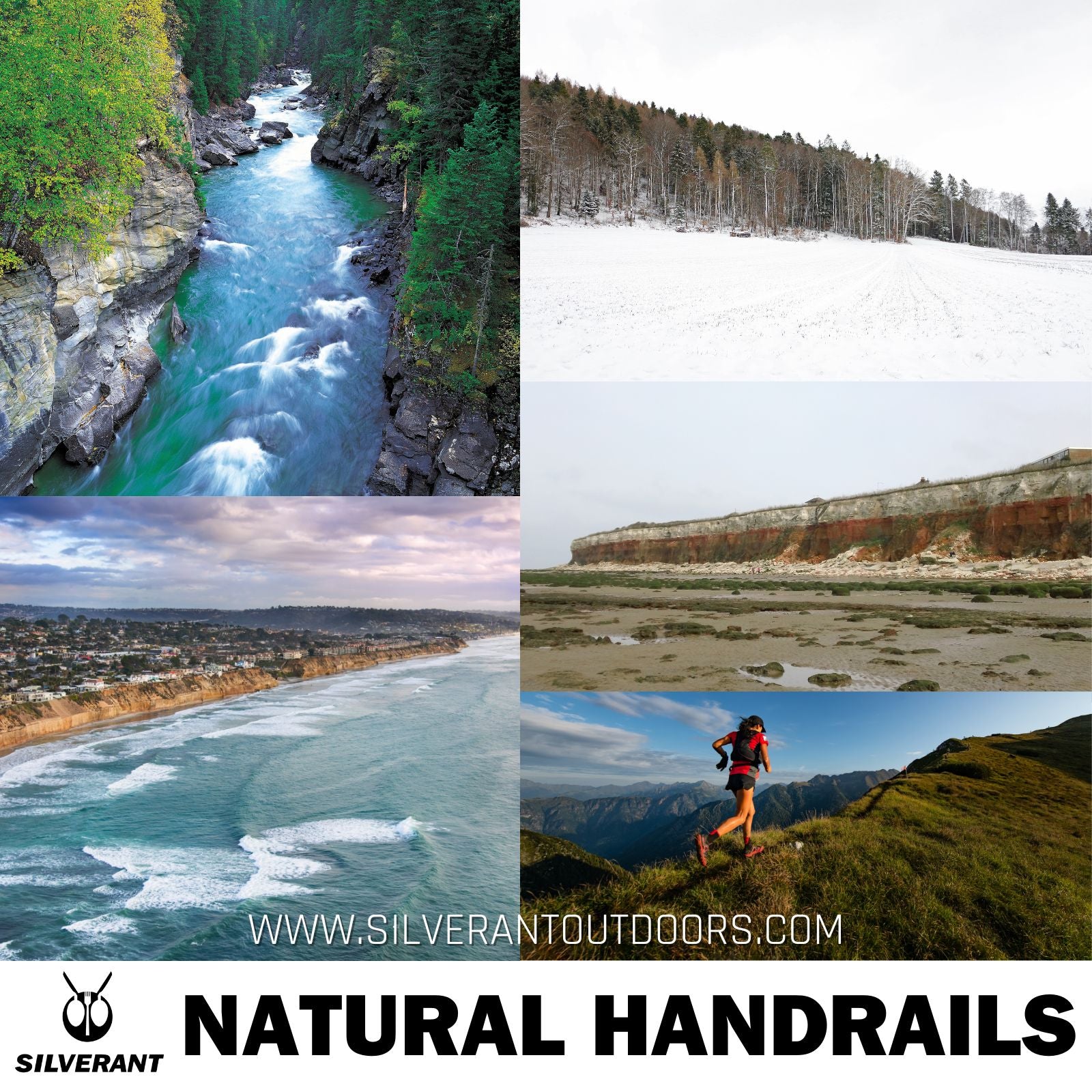
The Sun
Next up is using the sun, a trick as old as time itself. It's been the go-to for navigating for centuries, and for good reason.
It's pretty simple. Just follow where the sun rises and sets, and you've got your directions sorted.
And with a wristwatch, you can team it up with the sun to get even more precise directions.
Sun Compass
As we all know, the sun comes up from the east and goes down in the west.
Knowing this, you can make a sun compass to figure out all the directions.
All you need are some basic things you can find lying around—a stick and a few rocks.
First, find yourself a sunny spot where the sky's clear. Stick your stick in the ground so it makes a shadow.
Put a little rock where the shadow starts. Wait for about 15-20 minutes, then put another rock where the shadow ends.
Now, draw a line between those two rocks. This line represents the east-west direction.
The first rock shows you the west, and the second one shows you the east.
Stand with your left foot on the west rock and your right foot on the east one. You're facing north now, and south is behind you.
But here's the deal: if you're down south, like in Australia, things change up a bit.
The first rock shows you the east, and the second one shows you the west.
So, stand with your left foot on the east rock and your right foot on the west one. Now you're facing south, and north is behind you.
Using a watch boosts accuracy
And to add even more precision, an analog watch works wonders.
Simply hold your watch flat and aim the hour hand towards the sun.
Now, picture a line halfway between the hour hand and the 12 on your watch.
This line indicates south in the northern hemisphere and north in the southern hemisphere.
Remember, this method is most effective when the sun is high in the sky, around mid-morning or mid-afternoon.
It's a neat trick, and if you don't have an analog watch, you can always create a makeshift watch face in the dirt with some rocks and sticks.
Simple as pie, right? No need for fancy stuff—just a few handy tricks to keep in mind.
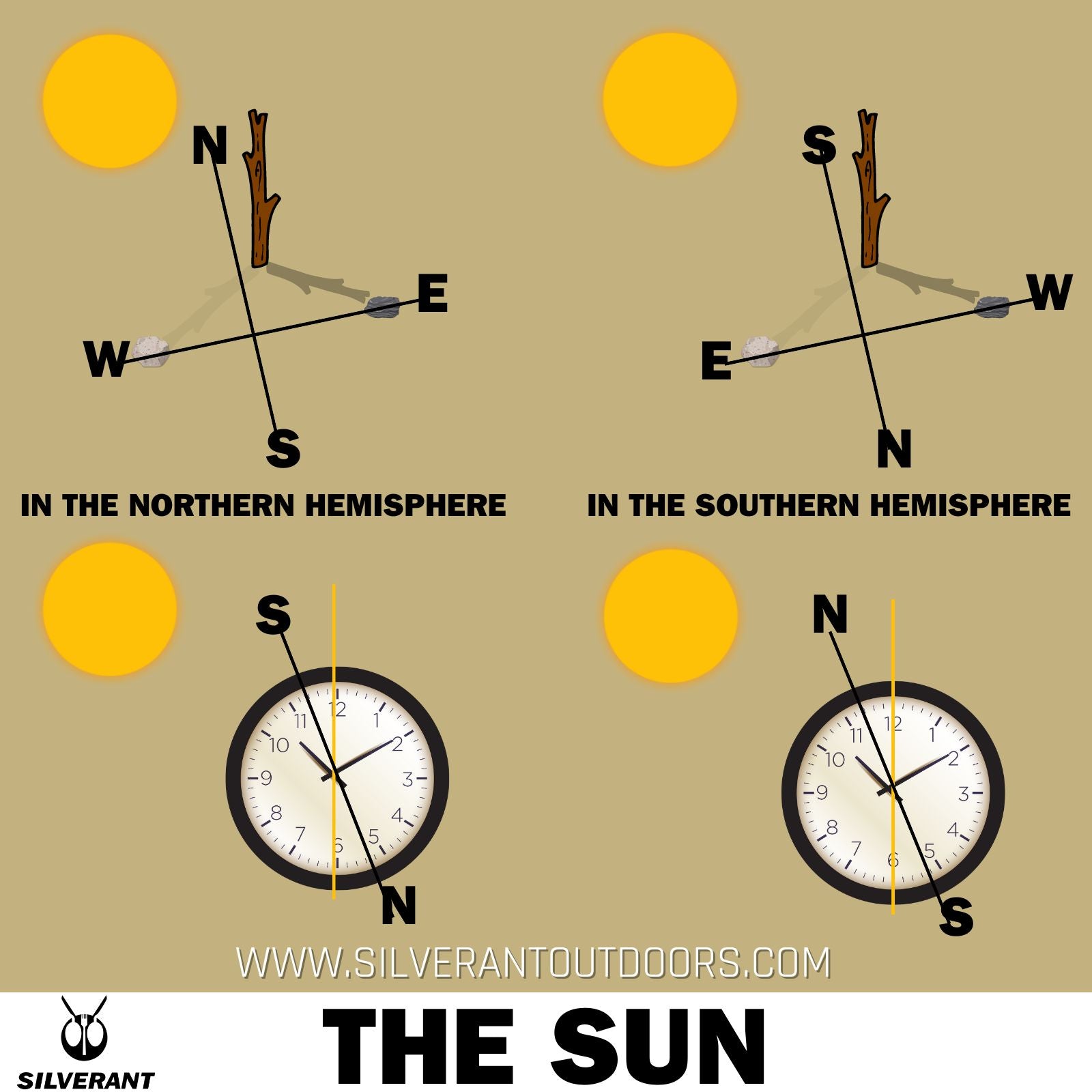
The Wind
If the sun's taking a break, don't sweat it—the wind's got your back.
Before you set off into the wild, it's smart to check out the prevailing winds.
For example, in the USA, along the West Coast, you'll usually feel the breeze blowing in from the west.
Along the East Coast, it's a bit trickier—summer brings winds from the west or southwest, while winter sees them coming from the northwest or north.
Then, find an open spot without big hills to spot which way the wind's blowing. Just feel it on your face or see which way your hair's dancing.
But hold up—winds can play tricks in places like canyons or cliffs, so don't bet the farm on wind alone. It's just one piece of the puzzle.
Moreover, a more reliable trick is to check out how the wind is shaping the landscape.
Trees are top-notch wind indicators. If you spot a bunch of trees all leaning the same way, you can bet the wind's been having its say.
And if you're not surrounded by trees, don't worry. Check out the grass, sand, or even the snow—they'll show you which way the wind's been blowing.
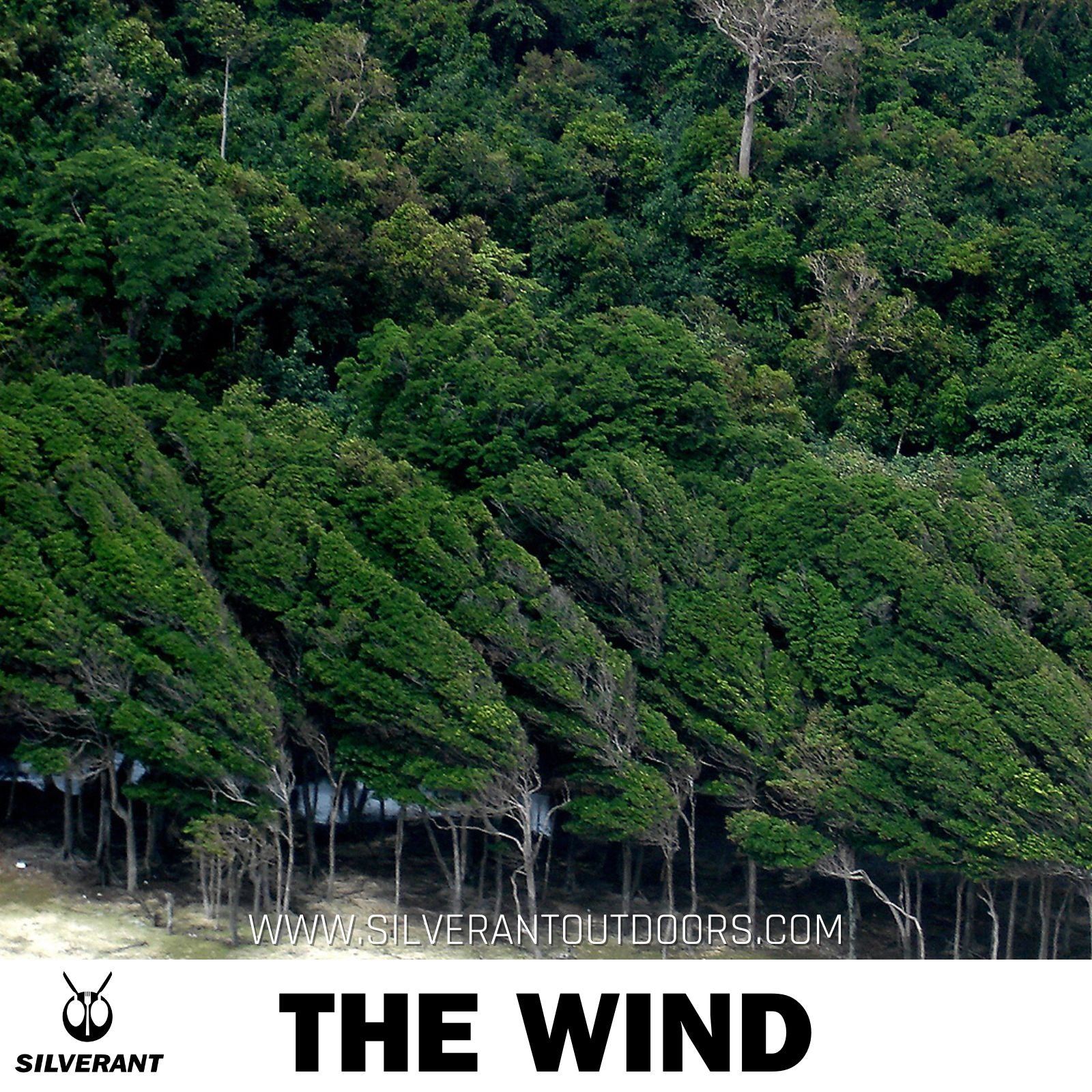
Plants
Moreover, plants don't just tell us about the wind—they give us direct clues about directions too.
Take trees, for instance. Study a few of them by walking around and checking how they're growing.
In the northern hemisphere, trees tend to have denser foliage on their southern side.
That's because branches facing south get more sunlight and spread out horizontally.
On the other hand, branches facing north grow more vertically.
It's a bit different in the southern hemisphere.
Here, you'll find that branches facing north spread out towards the sun, with more foliage. Meanwhile, branches facing south grow more upwards.
You can even use moss on tree trunks as a rough guide.
In the northern hemisphere, you'll often find more moss on the northern side of the trunk, where it's cooler and damper. The southern side gets more sun and is drier, so there's less moss.
However, in the southern hemisphere, it's the reverse, just like the pattern of tree branches.
But remember, moss isn't always reliable. Sometimes, trees with thick bark hold more moisture, leading to moss growth on unexpected sides.
So, it's wise to observe multiple trees to get a rough idea.
Another sign to look out for is lichens. While most are grey or green and grow in shaded areas, a type called Xanthoria Parientina stands out with its rusty color. You'll find it on south-facing surfaces like stone walls or trees.
And don't forget about ant hills—they can be a clue too!
Out west in the United States, harvester ants (Pogonomyrmex occidentalis) always build their entrances on the bottom of the southeast side of their mounds.
Similarly, sugar ants in Colorado's mountains arrange their nests the same way.
Down south, some ants go for southeast-facing slopes to catch the rising sun in autumn and winter.
They'll set up their hills near trees or rocks on the south or southeast side too.
In short, figuring out directions from winds and plants isn't as simple as following the sun. It requires a bit more observation, but they're definitely not useless.
So, next time you're taking a break and sipping from your water bottle, take a moment to check out the plants nearby.
With practice, you'll get better at it and feel more connected to nature.
And that's why every outdoor enthusiast begins their adventures—to learn and forge a deeper bond with the great outdoors.

Moon & Stars
And when the night sets in, don't forget about the moon and stars—they can guide you just like the sun does during the day.
Moon
Even the moon follows a similar path to the sun, rising in the east and setting in the west, but it's not always there like the sun.
Sometimes, you'll see it full and bright.
When that happens, in the northern hemisphere, you can use the moon to get a sense of direction because it's facing south.
If it's on your left, you're going east; if it's on your right, you're going west.
If it's behind you, you're going south. And if it's in front of you, you're going north.
And down south, it's the other way around.
But when the moon's in a crescent shape, whether it's waxing or waning, there's a cool trick.
Just draw an imaginary line from the top point through the bottom point and straight down to the horizon.
That point where it hits the horizon will be pretty close to the south.
But if you're down south, that point will be close to the north.
Stars
But when the night sky is dark and the moon's nowhere to be seen, you can still rely on the stars to guide you.
In the northern hemisphere, there's one star you can always count on: the North Star, also called Polaris.
It's your rock because it sits almost directly above the North Pole, staying put while other stars shift throughout the night.
You'll find Polaris in the Little Dipper constellation, right at the end of its handle.
If Polaris is playing hide-and-seek, no worries. Use the Big Dipper instead.
Just draw an imaginary line from the two stars at the end of its bowl—they'll point you right to Polaris.
Once you've spotted Polaris, you've got your bearings. Face it and stretch out your left arm towards it.
Your left hand points roughly north, and your right hand points south. East and West? They're perpendicular to north and south.
Now, down in the southern hemisphere, like in Australia or New Zealand, you won't find Polaris. Instead, look for the Southern Cross constellation.
It's your guide to the south, with its long axis pointing towards the south celestial pole.
Just remember, it pays to know your stars. You don't need to be an expert, but getting familiar with a few key constellations—like the Big Dipper, the Little Dipper, and the Southern Cross—can make all the difference.
Once you've got that know-how, the moon and stars aren't just pretty sights—they're also nature's own compass.
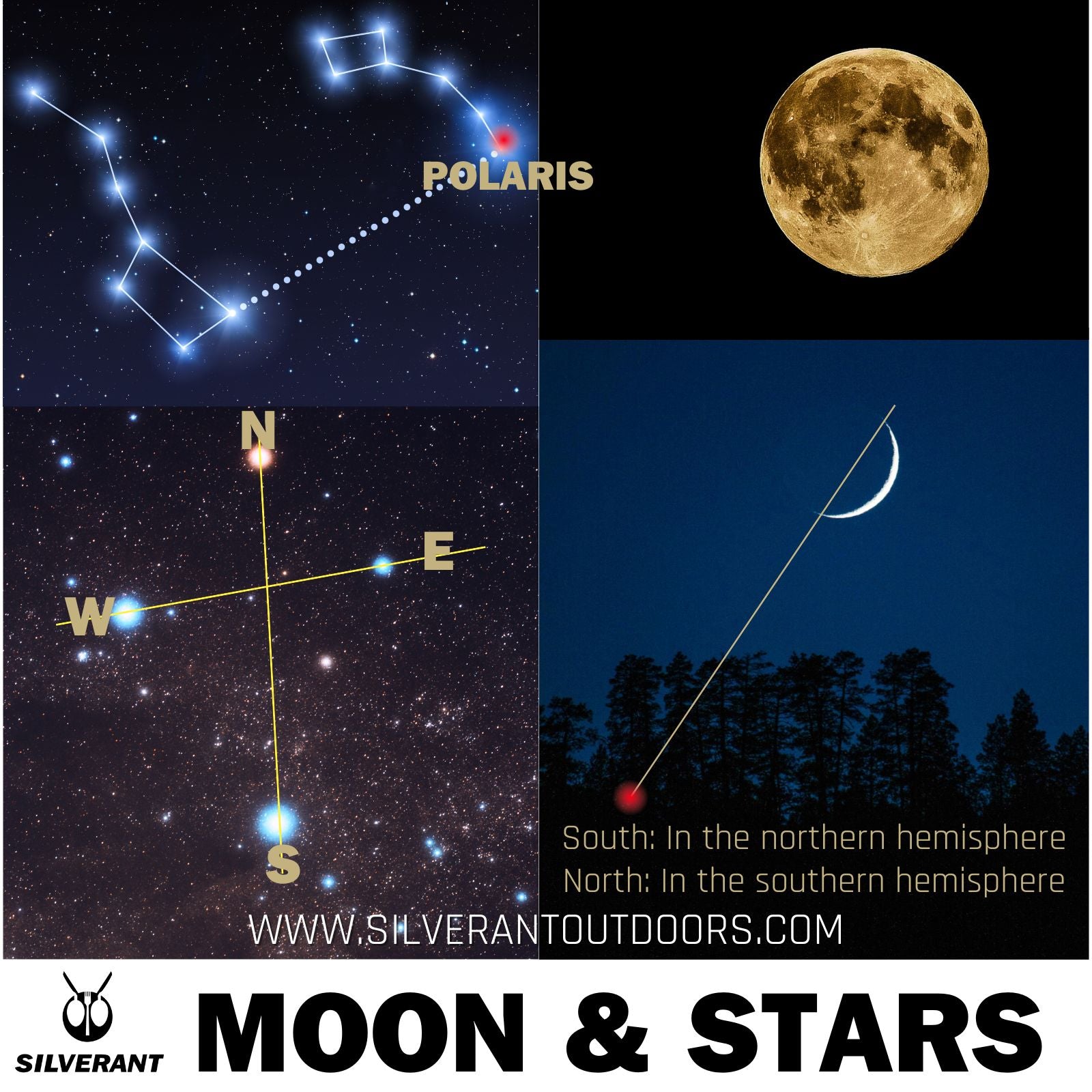
Snow
Lastly, when you're out in the winter wilderness, snow can also point you in the right direction.
Just take a look at how it melts.
Up north, you'll notice snow melting quicker on the south side of rocks or slopes facing south.
That's because the sun prefers hanging out in the southern sky, giving those spots a bit more warmth.
But flip the script down south—it's the opposite, just like all the other tricks we've talked about.
It's a pretty reliable clue, especially if you gather enough info from different spots.
But be cautious—other factors like dark rocks or flowing water can mess with the melting patterns.
Plus, snow's not just for finding your way. It's also a handy resource for quenching your thirst and cooking up a feast.
Just melt it down in your trusty cooking gear, and you're good to go.
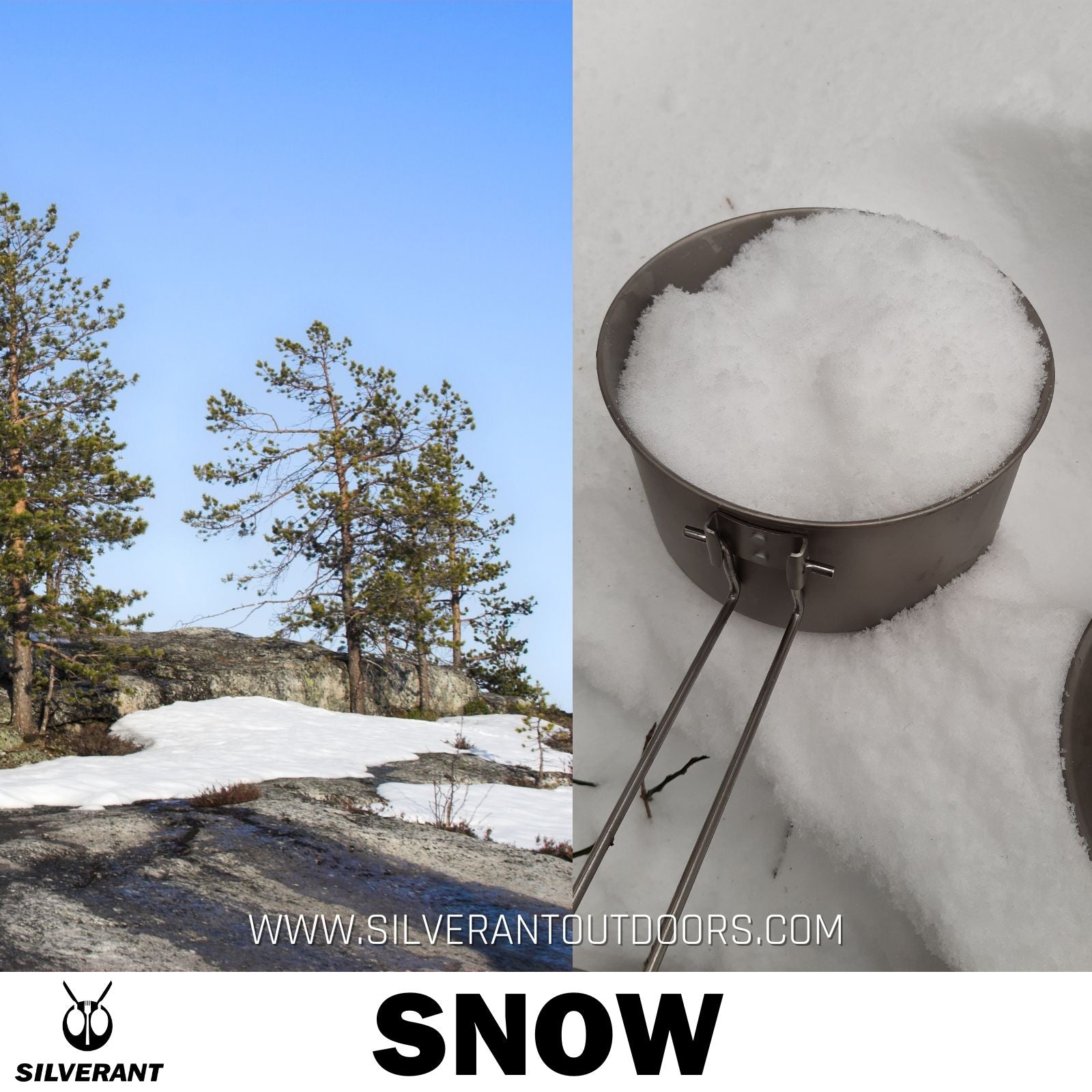
Conclusion
Natural navigation might seem old, but it's still gold, even if fewer folks are picking up on it these days.
It's handy in emergencies or when you're without your usual gear. Plus, it helps you rely less on tech and stay more in sync with nature.
But remember, when you're using nature to find your way, gather as many clues as you can—from the river to the sun, wind, plants, moon, stars, and snow.
Individually, they might not always be spot-on, but when you piece together multiple clues—like 3, 5, or even 7 of them—you'll be way more confident in your direction.
It's not as tough as it sounds, especially when you're always on the lookout for hints and know what to keep an eye on.
Sure, it takes some effort, but trust me—it's worth it.
Do you have any more questions about natural navigation? Drop them in the comments below!
To your next adventure
Steve












































